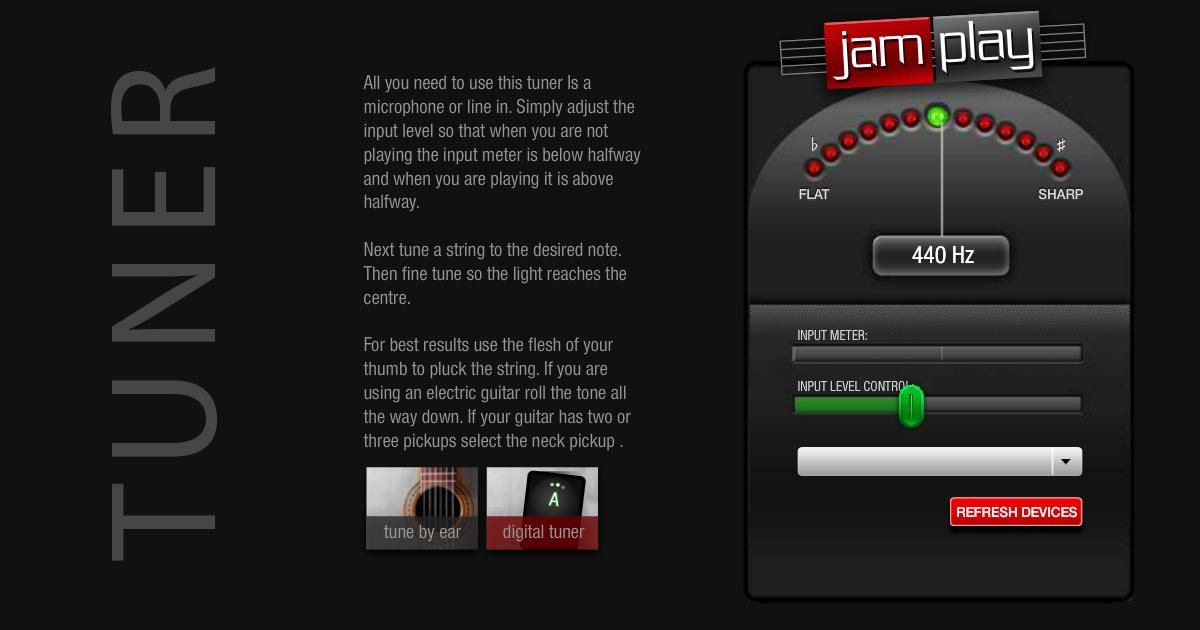
Acoustic guitar tuner online how to#
How To Practice With A TunerĮven if your instrument is in tune, there might still be pitches within a musical passage that just don't sound right. Change the microphone setting to allow this site. Safari: Safari > Preferences, then click Websites.

Firefox: Go to Preferences -> click Privacy & Security -> Scroll down to permissions and select Settings. Chrome: Go to Settings -> Site Settings -> Microphone and allow this site to access the microphone. If you have disabled it in the past, then the tuner will not work. This tuner will require mic access through your web browser. If the needle and strobe are centered and steady, then your instrument is tuned.

If it is flat, it will register as 439 Hz or lower. If an A is sharp, it will be 441 Hz or higher. Tuners work by detecting the frequency of the pitch (sound waves). The accuracy of a pitch is what musicians call intonation. It will let a musician know if the note they are playing is sharp (too high), flat (too low), or if it is in tune. There are no hard rules however, if you find lighter strings work well for you, then use them.A tuner is a device musicians use to detect pitch accuracy. Heavier strings provide a fatter, fuller sound and will give more sustain. This will increase string tension and help avoid buzzing.

Acoustic guitar tuner online full#
Heavier strings will usually be used by guitarists tuned to full step down - (strings where the first string is at. Make life easy for yourself! String Gauge

You may find this preferable to strapping on another guitar or re-tuning mid flow. If you're tuned to full step down, a capo can provide flexability should you need to play a song in a higher key such as standard tuning. These low tunings provide a new musical landscape to explore. Blues players may enjoy the loose string action allowing for expressive string bending. Don't think D standard tuning only appeals to heavy metal aficionados though, playing clean open notes and chords will produce refreshing and interesting sounds. This tuning is popular amongst metal and some rock groups who prefer to throw a bit more weight behind their sound allowing for really aggressive heavy riffs. Your browser does not support the audio element.


 0 kommentar(er)
0 kommentar(er)
